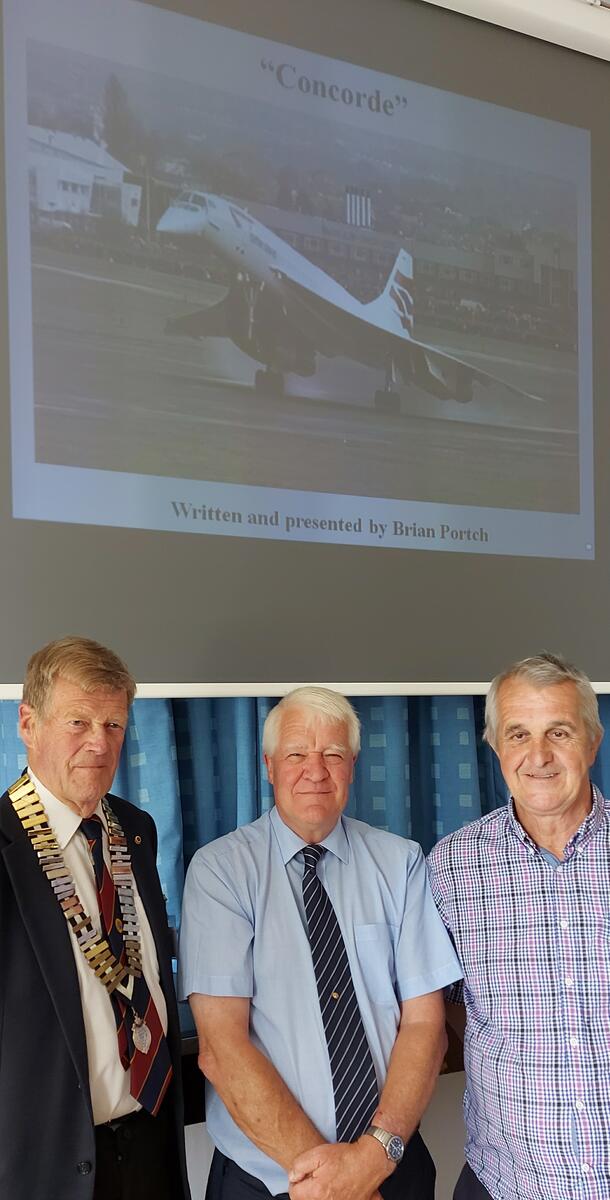"Concorde" By Brian Portch 19th July 23
Press Officer Rick Purnell writes ….
Concorde - a lasting symbol of engineering excellence…..
One of our more recent members, Brian Portch a member of the Aeronautical Society, gave an illustrated talk about his former employment with Rolls Royce Aero Engines and British Aerospace, Filton Bristol during the development and operations of our supersonic airliner – Concorde.
The concept of supersonic travel began in the late 1950’s with the developments of the Vulcan Delta, the Fairy Delta II and the TSR-2 projects. In 1962 a treaty was struck with France to develop an airliner capable of supersonic flight. It nearly didn’t get built as by 1964, the costs were soaring and the government of the day wanted to pull out but penalty clauses were too punitive. Production started in 1967 with the maiden flight in 1969. The first Mach II (twice the speed of sound) was achieved the following year as was its first service flights.
Concorde was powered by 4 Olympus engines and guzzled 25,000 gallons of aviation fuel per 1 hour of flight not ‘green’ as we need today! Commercial problems ensued with overland transits and disruption below from ‘sonic bangs’ resulting in bans from USA, India & Malaysia. The first passenger flights started in the 80’s with Britannia Airways and by ’82 regular charter flights began mainly over the Atlantic with the 1st regular scheduled flights going to Barbados in the 87’s. Because of high operational costs the use of Concorde became a diminishing niche market and the Paris air crash in 2000 saw the eventual suspension of airworthiness certification in 2003 compounded by the loss of 40% of regular passengers following the twin towers 9/11 disaster and was sadly retired for economic reasons. There were long term legacy benefits from the amalgamation of the many smaller manufacturers into a unified industry involving Anglo/French cooperation with the successful Airbus project.
Any questions revealed the take-off speed of Concorde was 275 mph into headwind and 185 mph landing speed. The length of runway also limited from where it could operate. Member David Jeffery gave the vote of thanks.
